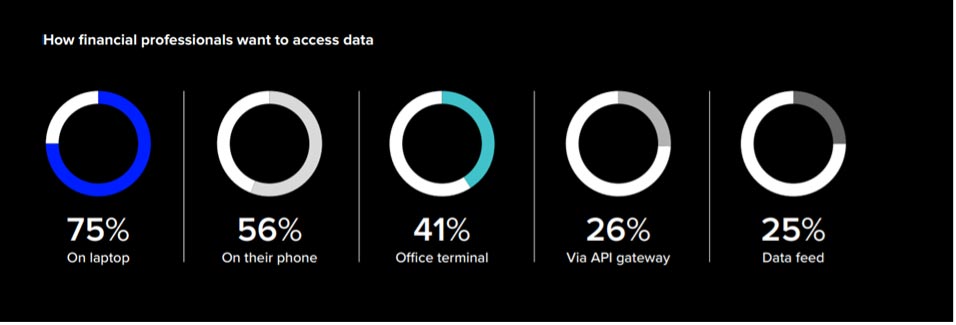Introducing Technology in Co-living Spaces
Today, co-living is marked by a wide spectrum of fast-growing technology to improve living conditions for tenants

The applications of technology are boundless. New technology, such as better video monitoring, is being used in the property sector to improve the quality of life for families and communities. Cloud-based video surveillance, in particular, for the co-living movement, is assisting operators in improving shared spaces for residents in ways that on-premises surveillance never could. Here’s how the technology boom is benefitting co-living, from improved security to better social areas.
Co-living is not a new concept; humans have been living in shared spaces for thousands of years, cooperating and socialising for the common good. What distinguishes today’s co-living movement is the wide spectrum of fast-growing technology that is being used to improve the living conditions of tenants. Co-living places are unquestionably a lower-cost, high-quality way of life.
What does it mean to “introduce technology” in a co-living space? — How can technology improve co-living? It is in five major domains:
- Voice command
- Sustainability
- Large Touch panels
- Intelligent locking system
- Integration
Technology for Smart Living
The Internet, massive processing capacity, cloud platforms and artificial intelligence (AI) have all come together to produce technologies that are revolutionising the property sector. Whether it is assisting buildings in being more energy efficient or sustainable, technology can help. Technology makes co-living situations safer and more intelligent for the individuals who live there.
- Mobile applications: With cell phones becoming more important, co-living companies are turning to mobile apps to communicate with their tenants and make their lives easier. The software facilitates seamless communication and provides immediate help. Residents may also use the built-in apps to report difficulties, request meals, laundry services or even seek a roommate change, and the overall system speeds up the process. Most of these players continue to place a premium on safety and security. Many companies have implemented biometric and facial recognition systems and a 24-hour concierge and security guards.
- On-premises video surveillance: The data from this had limited uses in the past, as it was frequently accessed only after a security incident, such as a break-in. As a result, the video would be rarely used, and the camera and storage system would be an unnecessary expense with no return on investment. The cloud has had a significant impact on video surveillance. Remote management allows operators to alter, adjust and perfect the system without having to be on-site. Remote monitoring informs operators of any odd situations such as equipment malfunction or damage. In co-living spaces, a cloud-based video surveillance system can assist operators in gaining a better understanding of how tenants use their space and making changes that benefit everyone.
- Tech enabled process for better customer experience: When face-to-face contact isn’t possible, digital technology is best suited to serve guests, especially during these trying times. The move-in and move-out processes are now entirely digital, with many tools and apps in charge. Companies have also changed the language in their email responses and app notifications to reflect the new safety procedures. Most players are investing in new technologies such as AI and machine learning to deliver user-friendly services and learn customer behaviour to provide customised products.
- Tech for tenant’s safety: People’s safety is one of the most important aspects of building design. It is enabling entrance systems with touchless entrances and new ventilation systems, for example, following the pandemic. Individuals who live in shared spaces need to know that security is well-managed, and that the management wants to ensure that only residents and their guests have access to the place. Another simple option for screening people with fever before they enter a common location is thermal cameras. Though a high temperature does not mean you have Covid-19, the technology screens those with high temperatures to be manually evaluated for other symptoms or be referred for a test.
- Digital socialising: Digital tools are also helping to develop a feeling of community in a sector that is based on physical locations. The co-living industry’s whole value proposition relies heavily on community, and regular in-person meet-ups are a big part of it. Rather than holding regular meet-ups in person, most of these gatherings are now held online. Many are organising Internet activities, such as cooking workshops, music sessions and even virtual dance parties. Interactivity is crucial to the success of these e-meets. It’s critical to establish an online feedback system that allows residents to submit suggestions and provide input for future activities.
- Analysing co-living trends for enhancing co-living experience: Surveillance, for example, can show operators which parts of the common spaces are being used the most and at what times, including locations where space is limited, such as the laundry room or gym. Operators can use the video’s insights to improve the current set-up when possible and design better future co-living spaces by analysing it using AI. This technology can also keep everyone safe in today’s environment. If someone is wearing a face mask as they enter a building, cameras can detect it and restrict admission until they remove it.
- New Innovations: There are other tech-enabled innovations that are revolutionised to meet customer trends. For instance, Colive recently launched a unique concept called ‘Bid4Bed.’ It allows the tenants to select the property of preference and bid for the price that falls within their budget. It allows tenants to quote a fair estimate of what they’re willing to pay for a listed hybrid living accommodation and also eliminates complicated and unorganised processes. If the bid is approved, the customer is required to pay the remainder and move in. If the bid is rejected, they receive a counteroffer. It reduces the scope for human error and brings in fool-proof transparency. Now the sales executive just needs to ask the customer to make a bid, and there is no need for negotiation.
Residents may access their rooms without using physical keys. Smart locks, often known as digital check-ins, help monitor the building’s security measures. Co-living players will match this need for superior experiences. Newer opportunities are surfacing now that things are settling. One thing is certain: co-living is for the long run!
The author is Founder and CEO, Colive
DISCLAIMER: Views expressed are the author’s own, and Outlook Money does not necessarily subscribe to them. Outlook Money shall not be responsible for any damage caused to any person/organisation directly or indirectly.









